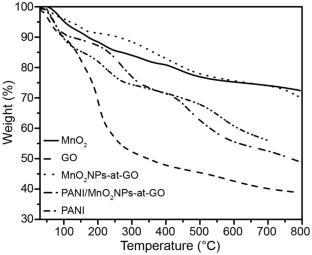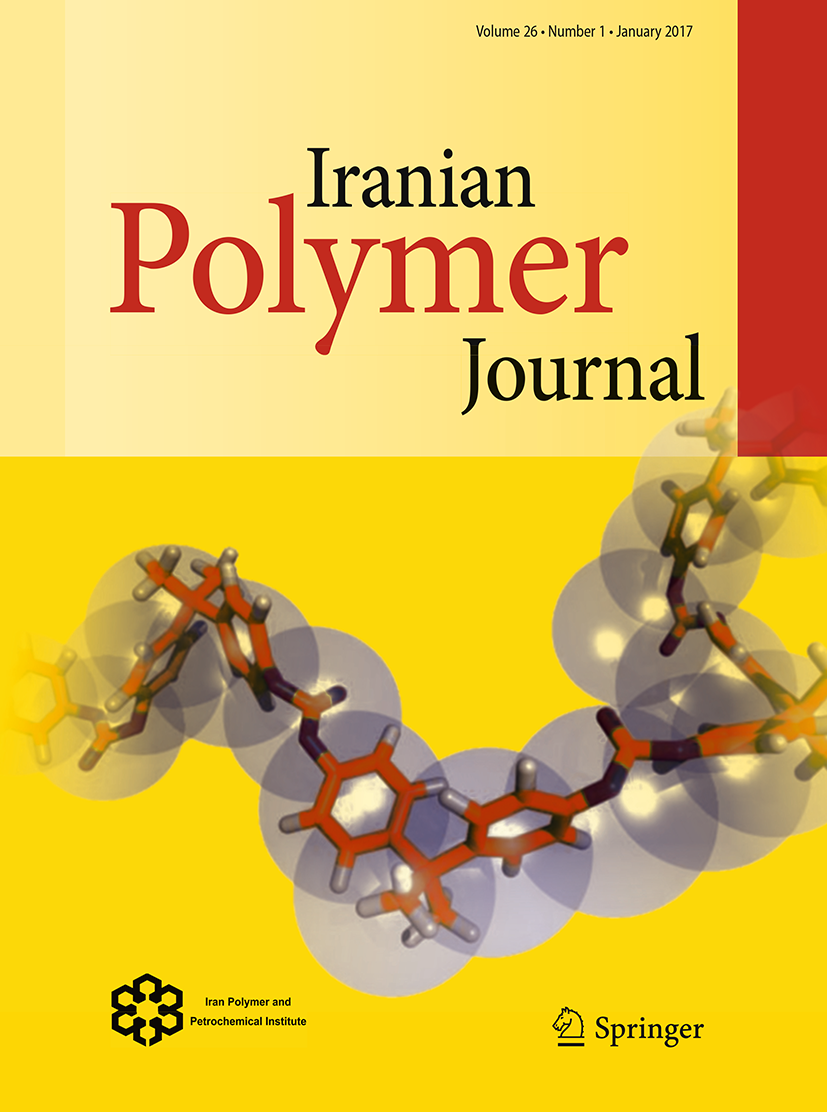Manganese dioxide nanoparticle coated graphene oxide hybrid nanofiller: its effect on structural, thermal, and dielectric properties of polyaniline ternary nanocomposites
Abstract
Ocimum sanctum (Tulsi) leaf extract was taken as both reducing and capping agent to synthesize manganese dioxide nanoparticles (MnO2NPs). The MnO2NPs coated graphene oxide (MnO2NPs coated GO) hybrid nanofillers were synthesized using an in situ method. MnO2NPs coated on GO hybrid nanofillers reinforced polyaniline (PANI) ternary nanocomposites were fabricated by incorporating “MnO2NPs coated GO hybrid nanofillers” into the polyaniline (PANI) matrix through in situ polymerization. FTIR showed interactions between the components, evidenced by the Mn–O bond and secondary amine group at 507. The absence of the data of ternary nanocomposites is evident due to their insolubility in any solvents. The XRD analysis suggested the successful incorporation of MnO2NPs-at-GO into the PANI matrix, resulting in reduced crystallinity and strong interfacial interactions without forming any new crystalline phases. The addition of MnO2NPs-at-GO hybrid nanofillers significantly enhanced the thermal stability of the PANI matrix. SEM revealed changes in nanostructured morphology caused by the presence of MnO2NPs-at-GO hybrid nanofillers within the PANI matrix by effectively coating MnO2NPs-at-GO hybrid nanofillers with PANI molecular chains. The dielectric parameters of the PANI/MnO2-at-GO ternary nanocomposites were significantly altered i.e., both AC conductivity and dielectric permittivity increased, and dielectric loss decreased in comparison with the pristine PANI matrix across the applied frequency region caused by the establishment of interfacial adhesions among MnO2NPs-at-GO hybrid nanofillers and PANI matrix. This ternary nanocomposite can lead to advanced materials with enhanced structural integrity, thermal stability, and dielectric properties, making them suitable for applications in flexible electronics and energy storage devices. Additionally, these nanocomposites could be utilized in sensors and conductive coatings, benefiting from their improved performance characteristics and multifunctionality.
Graphical abstract


 求助内容:
求助内容: 应助结果提醒方式:
应助结果提醒方式:


